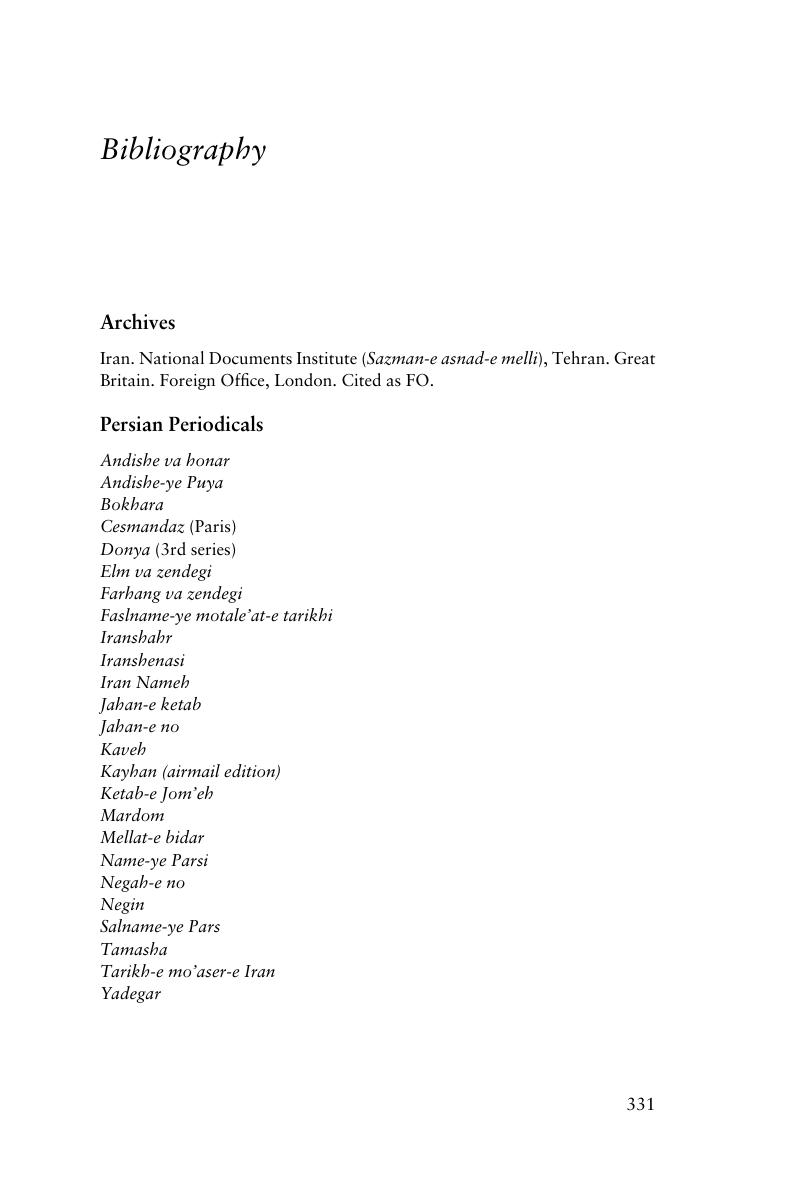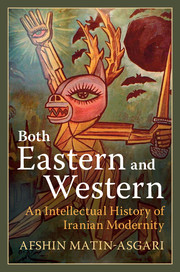Book contents
- Both Eastern and Western
- Both Eastern and Western
- Copyright page
- Dedication
- Contents
- Acknowledgments
- Note on Translation and Transliteration
- Introduction
- 1 Lineages of Authoritarian Modernity
- 2 The Berlin Circle
- 3 Subverting Constitutionalism: Intellectuals as Instruments of Modern Dictatorship
- 4 Intellectual Missing Links
- 5 The Mid-century Moment of Socialist Hegemony
- 6 Revolutionary Monarchy, Political Shi’ism and Islamic Marxism
- 7 Conclusion
- Epilogue
- Notes
- Bibliography
- Index
- References
Bibliography
Published online by Cambridge University Press: 06 August 2018
- Both Eastern and Western
- Both Eastern and Western
- Copyright page
- Dedication
- Contents
- Acknowledgments
- Note on Translation and Transliteration
- Introduction
- 1 Lineages of Authoritarian Modernity
- 2 The Berlin Circle
- 3 Subverting Constitutionalism: Intellectuals as Instruments of Modern Dictatorship
- 4 Intellectual Missing Links
- 5 The Mid-century Moment of Socialist Hegemony
- 6 Revolutionary Monarchy, Political Shi’ism and Islamic Marxism
- 7 Conclusion
- Epilogue
- Notes
- Bibliography
- Index
- References
Summary

- Type
- Chapter
- Information
- Both Eastern and WesternAn Intellectual History of Iranian Modernity, pp. 331 - 354Publisher: Cambridge University PressPrint publication year: 2018



